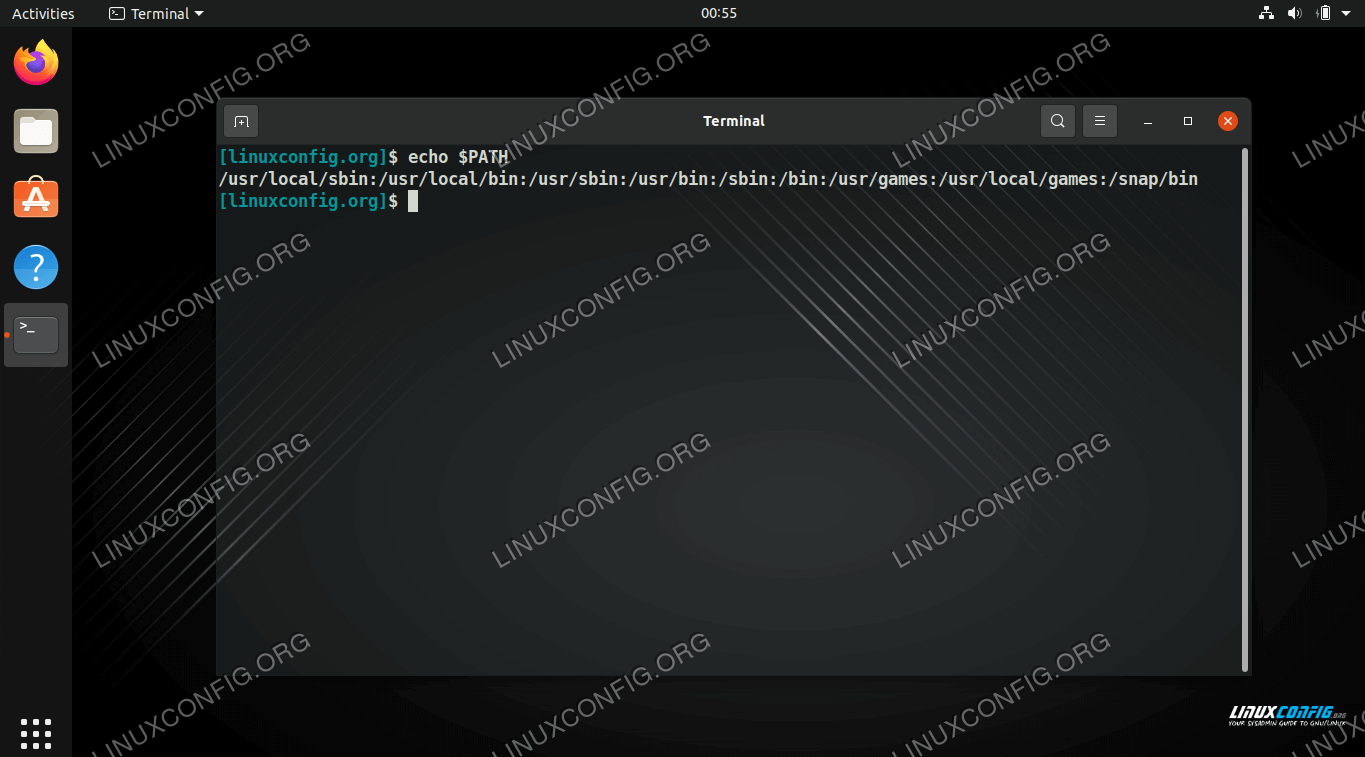

- Path is already configured as a root folder linux how to#
- Path is already configured as a root folder linux download#
Each user will have their own folder in the /home directory. The home directory is by default where all users have their own personal working space. We will discuss the most important ones below. There are a lot of folders in your Linux system. Some distributions will use ll as an alias for -l for the long list command. This means you want to see more details as well as every item to be on a separate line to make it easier to read. The -l command means to look for the long listing. You can see a lot more information on the screen. For example, typing ls -l / displays a different output than just /.

You want to list the items in a directory where you are located.īut you can also add additional commands to ls. It is the most important command to know and understand. Keep in mind that ctrl L might not work on all Linux distributions, but the clear command will. To clear the screen, type clear or use ctrl L. The home directory is where the users are, so use the following command to see what’s in your user home directory. If you had to concatenate the certificate files, your primary certificate (e.g., your_domain_name.crt) may not be correctly combined with the intermediate certificate.įor more information, see the Nginx SSL documentation.This will show you the directory structure of the Linux file system, the setup of the hard drive, or the default folder structure.Įach folder has a designated purpose. When you view the certificate, check the Subject, Issuer, and Valid To fields If you receive a "not trusted" warning, view the certificate to see if it is the certificate you expect. If your web request takes a very long time and times out, a firewall may be blocking traffic on TCP port 443 to the web server. If you immediately receive a browser message about the site not being available, then Nginx may not yet be listening on port 443. You shouldn't receive any browser warnings or errors. We recommend testing your site with Firefox this browser will give you a warning if your intermediate certificate is not installed. Open a web browser and visit your site using https. If your website is publicly accessible, our SSL Certificate Checker can help you diagnose common problems.

Use the DigiCert ® SSL Installation Diagnostics Tool To concatenate the files, run the following command:Ĭongratulations! You've successfully installed your SSL certificate. You need to concatenate your primary certificate file (your_domain_name.crt) and the intermediate certificate file (DigiCertCA.crt) into a single. Note: Make them readable by root only to increase security.Ĭoncatenate the primary and intermediate certificates key file you generated when creating the CSR, to the directory on the server where you'll keep your certificate and key files.
Path is already configured as a root folder linux download#
Log in to your DigiCert account and download the intermediate (DigiCertCA.crt) and your primary certificate ( your_domain_name.crt) files.Ĭopy these files, along with the. If you need to concatenate your primary certificate and your intermediate certificate in to a single file, see step 2.Ĭopy the certificate files to your server pem file contains both your primary certificate and the intermediate certificate. You should've received a your_domain_name.pem file from DigiCert in an email when your certificate was issued.
Path is already configured as a root folder linux how to#
How to Install and Configure Your SSL Certificate If you still need to create a certificate signing request (CSR) and order your certificate, see Nginx: Creating Your CSR with OpenSSL.Īfter we've validated and issued your SSL certificate, you can install it on the Nginx server where the CSR was generated and configure the server to use it. Nginx: Installing & Configuring Your SSL Certificate You'll need it later when installing your SSL certificate.Īfter you've received your SSL certificate from DigiCert, you can install it on your server. csr file that you created with a text editor.Ĭopy the text, including the -BEGIN NEW CERTIFICATE REQUEST- and -END NEW CERTIFICATE REQUEST- tags, and paste it in to the DigiCert order form. Note: You may have already set up default information. When prompted, type your organizational information, beginning with your geographic information. Note: If you're generating a Nginx CSR for a Wildcard certificate, make sure your common name starts with an asterisk (e.g., *.). When prompted for the Common Name (domain name), type the fully qualified domain (FQDN) for the site that you are going to secure. Certificate Signing Request (CSR) file: Used to order your SSL certificate and later to encrypt messages that only its corresponding private key can decrypt.Private-Key File: Used to generate the CSR and later to secure and verify connections using the certificate.You've now started the process for generating the following two files: Openssl req –new –newkey rsa:2048 –nodes –keyout server.key –out server.csr


 0 kommentar(er)
0 kommentar(er)
